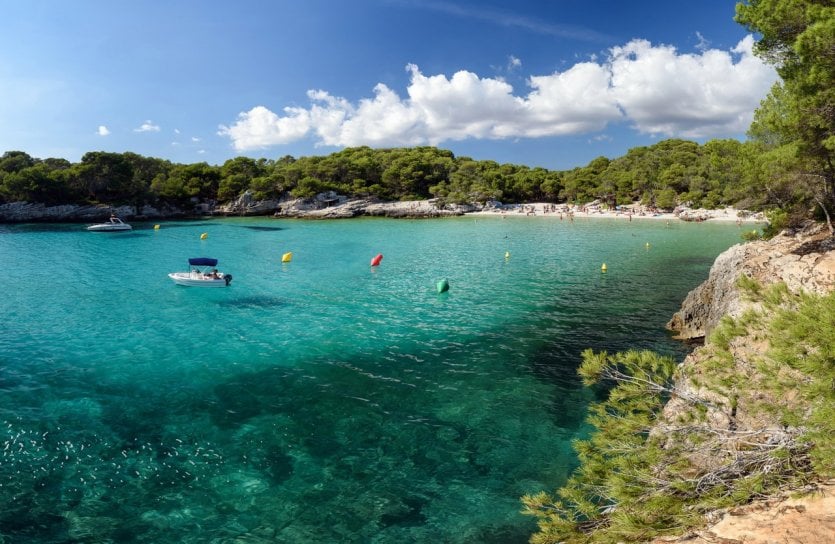
Just a 1.5-hour flight from Paris, the Balearic Islands off the Iberian Peninsula are an invitation to dream. This archipelago is distinguished by its indisputable assets: white sandy beaches, brilliant blue skies and turquoise waters, perfect for a vacation focused on rest and relaxation. But there's much more to the Balearic Islands, from Menorca to the main island of Mallorca, via Formentera, than their paradisiacal coastline. Their rich biodiversity, cultural heritage and unspoilt natural landscapes offer magnificent opportunities for sightseeing and hiking. Discover our 15 must-sees in the Balearic Islands.
1- Palma de Mallorca, a heritage to discover
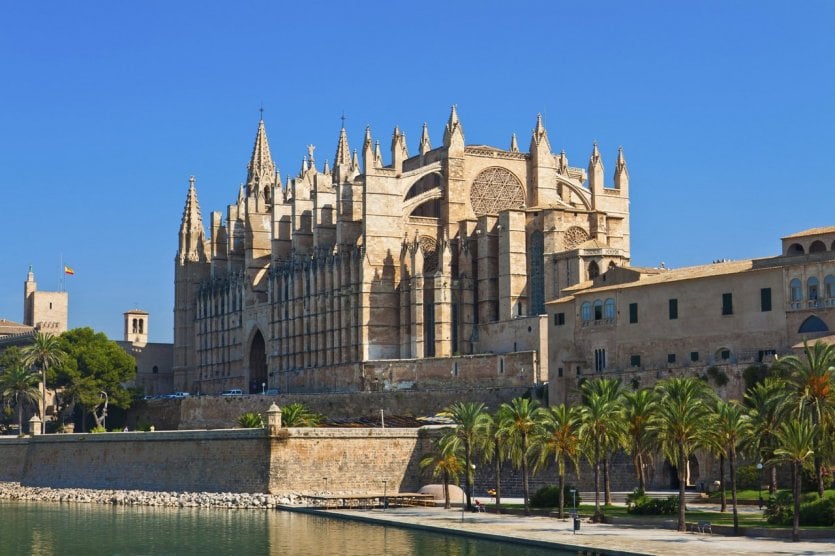
Capital of the island of Mallorca and of the Autonomous Community of the Balearic Islands, Palma de Mallorca is home to monuments of national interest such as La Seu, its imposing Gothic cathedral, which stands 125 m tall and watches over the city. Built in 1230, the last alterations to its royal chapel were carried out in 1903 by the famous Gaudí. For a breathtaking view of the sea, you should also visit Bellver Castle, former residence of the island's kings. Book your cathedral ticket at the best price !
2- Valldemossa, a picturesque stopover
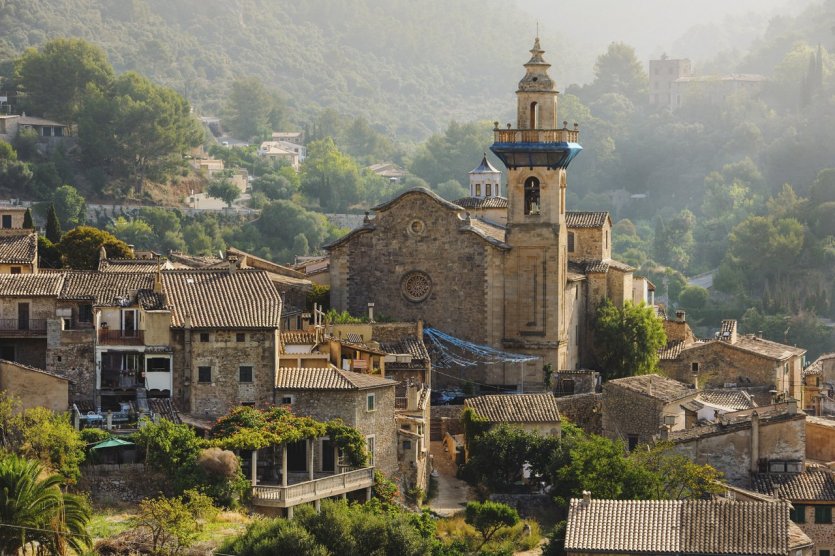
Located on the island of Mallorca, at an altitude of 400 m, the village of Valldemossa was once the preferred holiday resort of the archipelago's wealthy families. The village forged its reputation in the winter of 1839, when Georges Sand and Frédéric Chopin took up residence in its Carthusian monastery. A visit to this former monastery reveals the cells in which the two artists lived, as well as a charming 18th-century pharmacy, one of the oldest in Spain.
3- The Serra de Tramuntana massif, a natural wonder
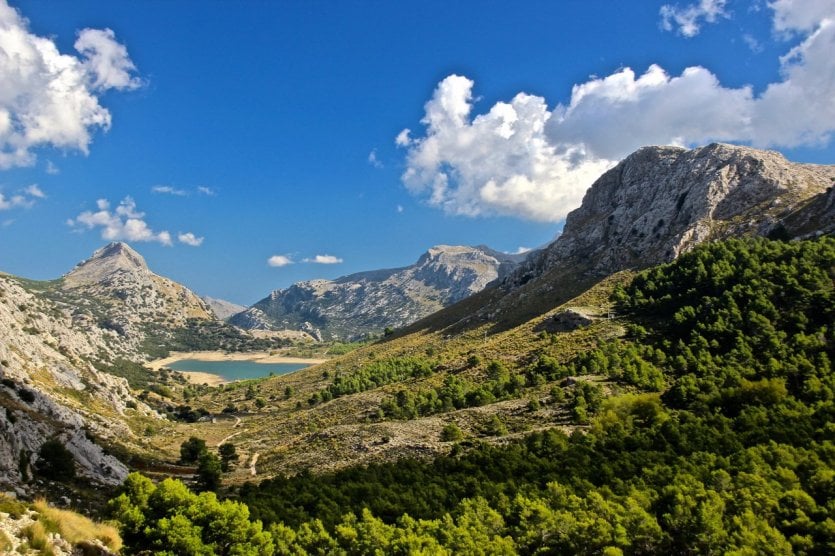
A UNESCO World Heritage Site, the Serra de Tramuntana massif on Mallorca's northwest coast is one of Spain's greatest natural wonders. Its biodiversity and varied landscapes invite you to stroll along its trails, such as the GR 221 - also known as the ruta de perdre en sec for its dry-stone walls - that skirts the main mountains of the site. The massif peaks at 1,445 m, at Puig Major. If you're passing through the Serra de Tramuntana, treat yourself to an unforgettable a hot-air balloon flight over Majorca !
4- Cuevas del Drach, in the heart of the caves
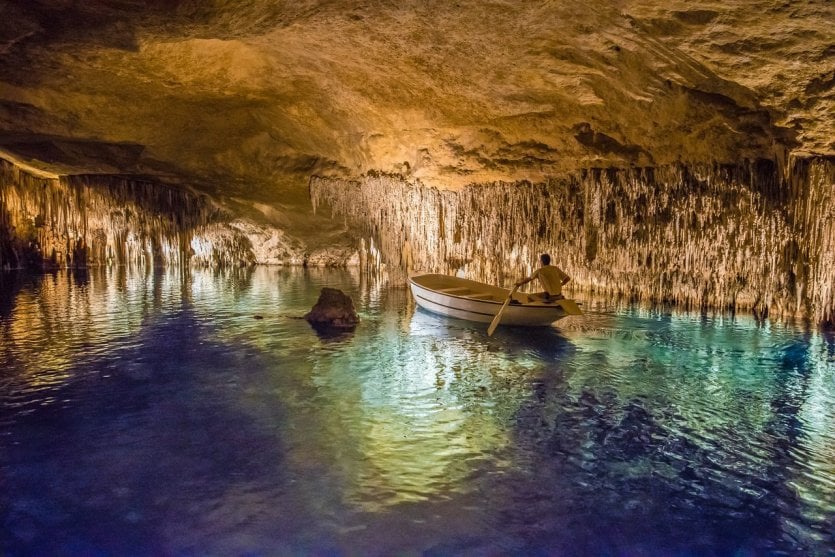
On Mallorca's east coast, mainly concentrated around the town of Porto Cristo, lie the Cuevas del Drach, one of the island's most visited sites. With a depth of 25 m, the caves stretch over a length of almost 1,200 m. The most famous of these is named after Edouard-Alfred Martel, the speleologist who explored it in 1896. It is the largest underground lake in the world. Book your visit visit to the Drach caves !
5- Formentera, jewel of the Balearics
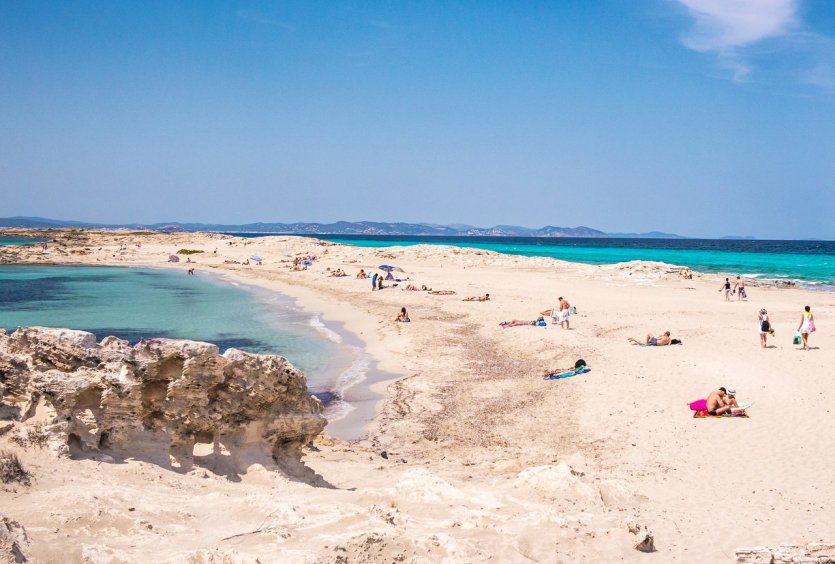
Formentera is reached by ferry from Ibiza: as soon as you arrive, the Mediterranean reveals all its charm. Turquoise seas, pine forests and sand dunes form the enchanting backdrop to the island, which is divided into four main villages. Among them, Sant Francesc Xavier is a little jewel with white walls. The beach at Illetes is Formentera's most spectacular: its Polynesian lagoon look and its white sand with pink reflections are just some of the reasons to discover it. See also our 10 must-sees on Formentera!
6- Es Vedrà, the mysterious island
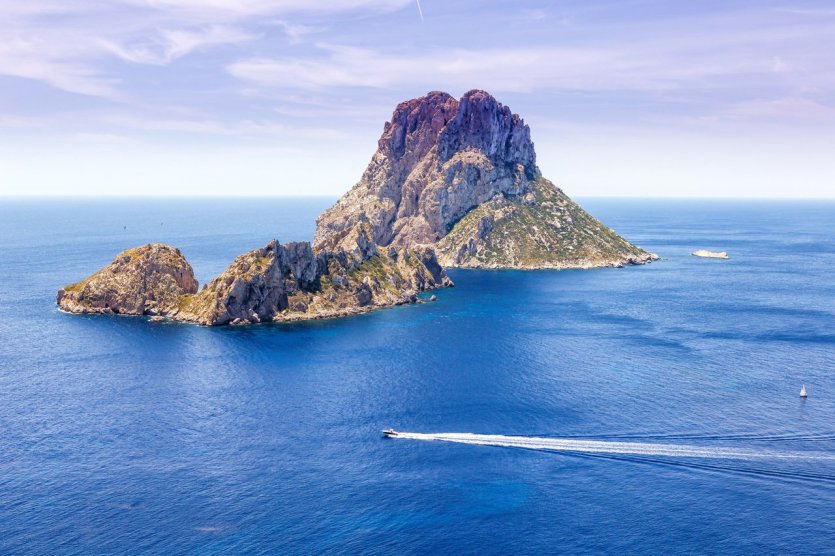
Just 2 km from Ibiza, the rocky island of Es Vedrà is part of the Es Vedrà, Es Vedranell and Ponent Islands Nature Reserve. Access is by sea only, and requires prior authorization. Uninhabited, the island of Es Vedrà is at the heart of many myths that have contributed to its fame: it is said to possess a magical character. For the best view of Es Vedrà, climb to the top of the Savinar tower.
7- Ses Salines Nature Park, a naturally protected area
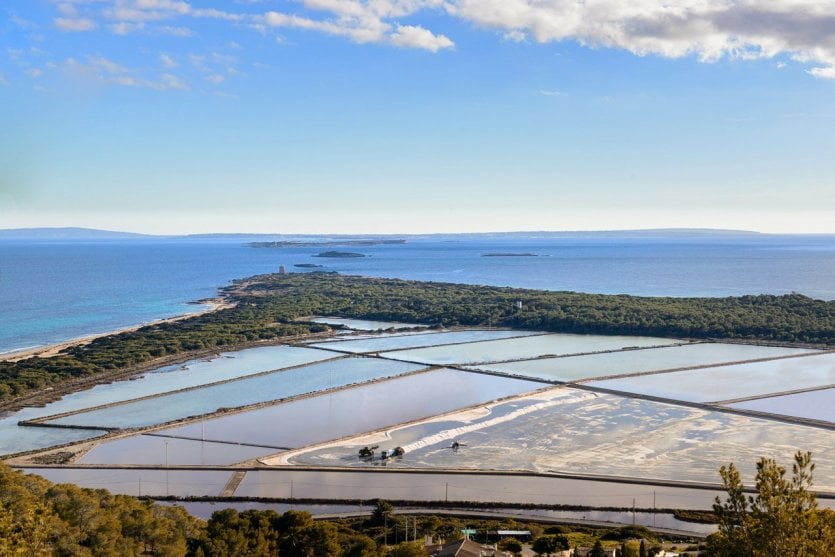
This 400-hectare salt marsh complex was exploited over the centuries by Phoenicians, Romans and Muslims. Shared by Ibiza and Formentera, Ses Salines nature park has been declared a protected area, as it is the nesting ground for 210 species of migratory birds and is home to a rich ecosystem. Its long beach is very busy in summer, so opt for the small coves along the cliffs leading up to the Ses Portes tower. Opt for a a sunset kayak trip from Ses Salines !
8- Cap de Formentor, an exceptional viewpoint
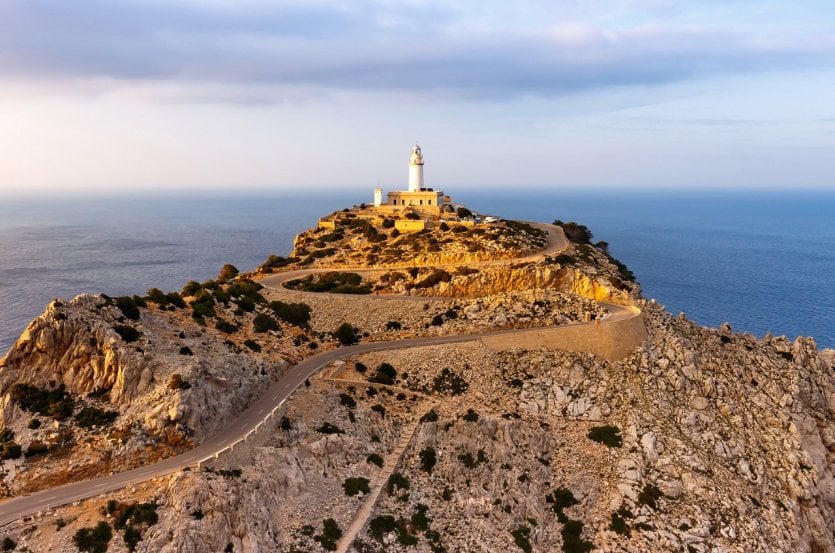
To the north of Majorca, Cap de Formentor is one of the frontiers of the Serra de Tramuntana. This peninsula offers some of the finest panoramic views in the Balearics, particularly along the road leading to the lighthouse. From its vantage points, you can admire the intense blue of the Mediterranean and the island of Menorca. The mountains of the Serra de Tramuntana form the backdrop to Cala Formentor beach.
9- Ciutadella, museum city
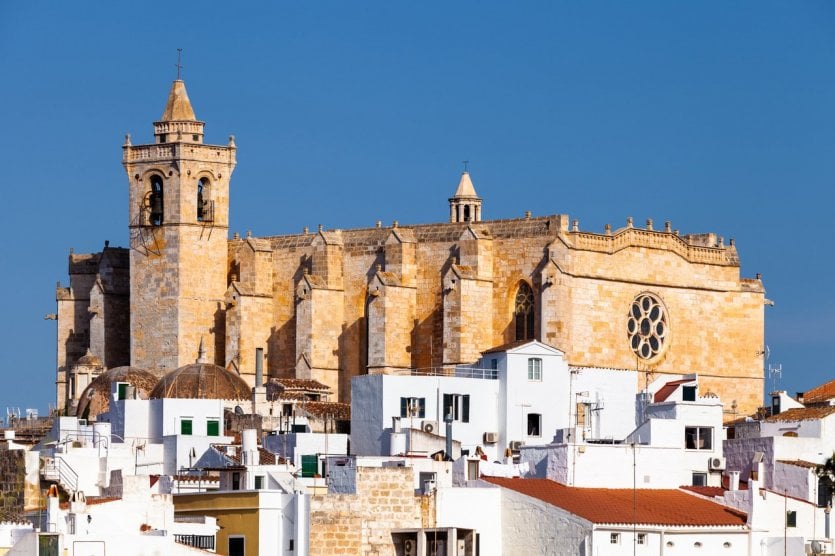
Capital of the island of Menorca until the 18th century, Ciutadella is an elegant city that has preserved its sepia-toned Baroque and Renaissance palaces. Strolling through its narrow streets is like visiting a museum, so sumptuous are the monuments. The 13th-century cathedral in the heart of the Old Town is a must-see. It preserves part of the minaret of the mosque that once stood on the site it occupies today. Make your visit easier by purchasing your audio guided tour of the city at the best price!
10- Cala Turqueta, a heavenly cove
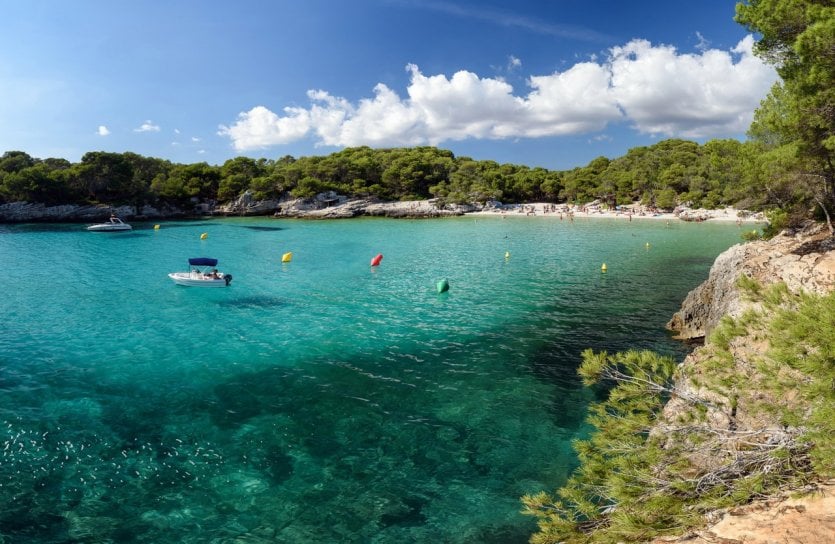
Cala Turqueta is one of Menorca's most famous coves: its turquoise waters and wild nature make for a picture-postcard setting! A victim of its own success, the beach is difficult to access in July and August. Prefer the off-season to enjoy the pleasures of a quiet cove where snorkeling is a real treat, with its abundance of fish. One of the jewels of the Balearic Islands!
11- Ibiza Ville and its nightlife
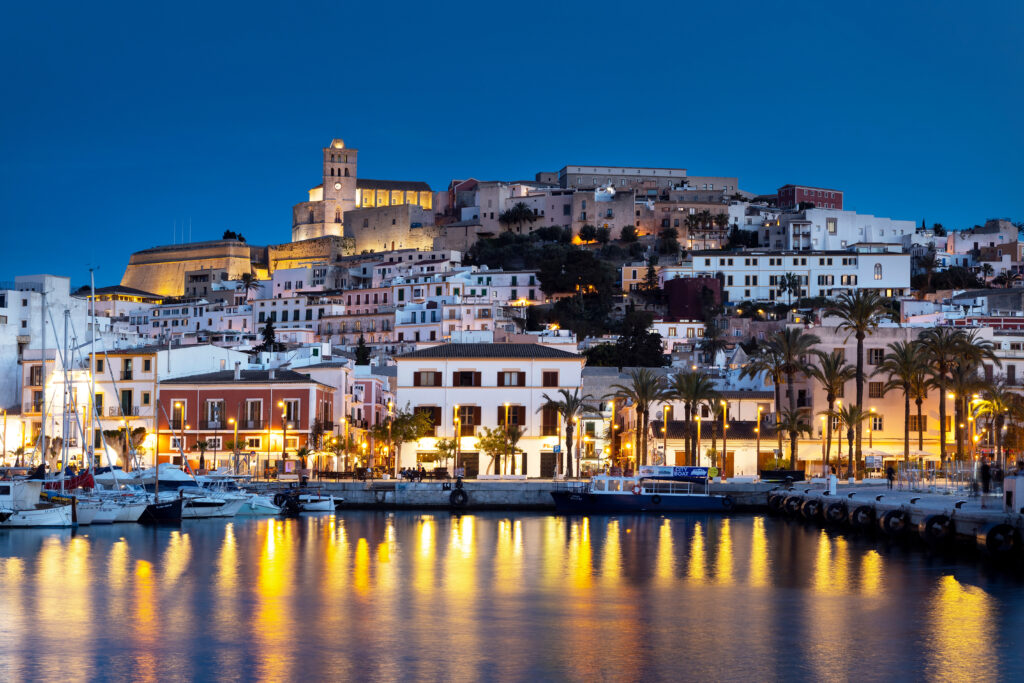
Ibiza Ville, or Eivissa in Catalan, is the vibrant heart of the island of Ibiza. Known for its vibrant nightlife, it's home to some of the world's best clubs and DJs. Explore famous nightclubs like Pacha, Amnesia or Ushuaïa for an unforgettable experience. Don't miss Ibiza's lively harbor, with its many bars and terraces, where the party starts as soon as the sun goes down. For a quieter evening, choose the trendy cocktail bars or lounges overlooking the sea. Ibiza Ville perfectly combines intense partying and rich culture, making every evening unique. Tip: Book your club tickets in advance and get ready for some memorable nights. Find out more in our selection of Ibiza's 13 must-sees!
12- Dalt Vila in Ibiza
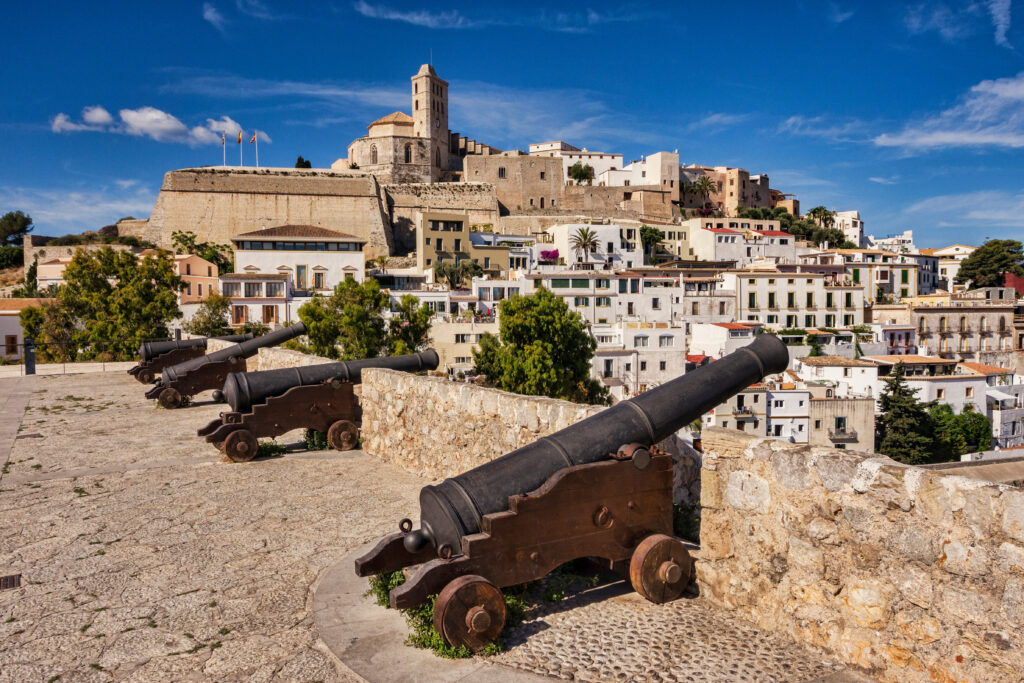
Dalt Vila, located in the heart of Ibiza Ville, is a historic district not to be missed. It's a UNESCO World Heritage Site, famous for its cobbled streets and fortified walls. Don't forget to visitIbiza Cathedral, located at the top of the hill, offering magnificent views over the city and the sea. For a cultural experience, explore the museums and art galleries dotted around the area. Dalt Vila is perfect for a daytime or evening stroll, with restaurants offering local dishes and a pleasant atmosphere. It's a place where history meets modern Ibizan life, ideal for those looking to learn more about the island. Tip: Wear comfortable shoes for the cobbled, uphill streets! Book your guided tour of Dalt Vila with craft workshop !
13- Cala d'Or, Majorca
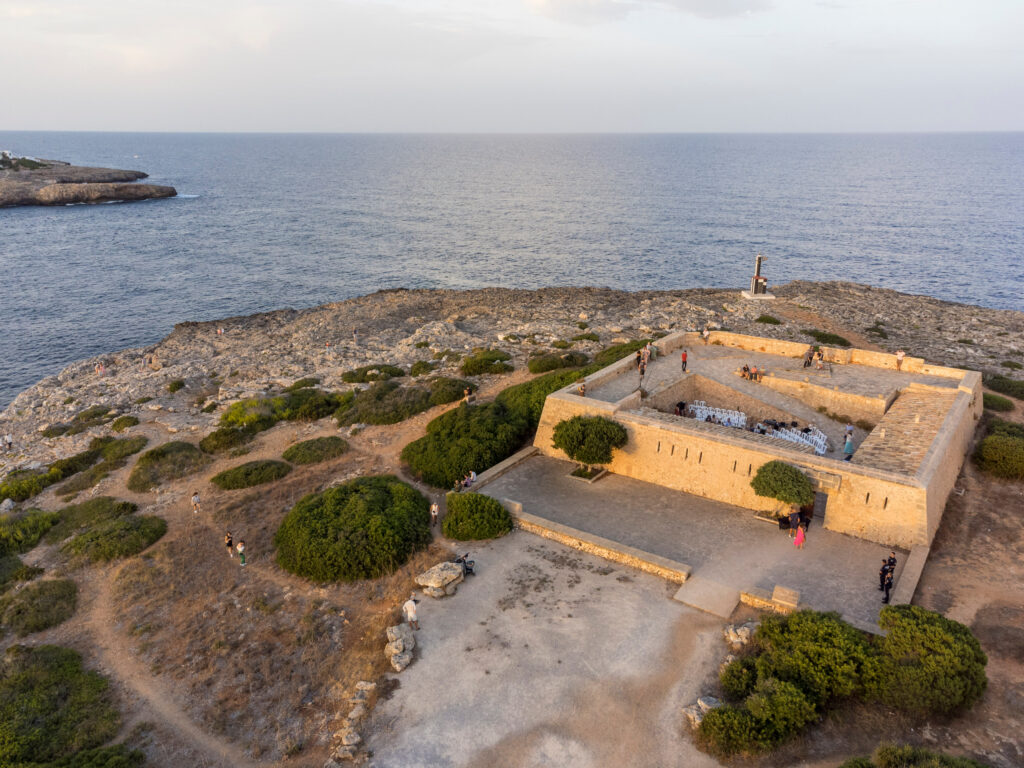
Cala d'Or in Majorca is an ideal vacation destination for those seeking beaches and a relaxed atmosphere. This seaside resort is famous for its small coves with crystal-clear waters and fine sand. You'll find numerous beaches such as Cala Gran and Cala Esmeralda, perfect for swimming and snorkeling. The center of Cala d'Or is lively, with a varied selection of restaurants, cafés and boutiques. If you enjoy walking, explore the rocky coastline for breathtaking views. The marina, with its luxurious yachts, is an excellent place for an evening stroll. Cala d'Or is also a good starting point for visiting other sites on Mallorca. Tip: rent a bike or car to explore the area at your own pace.
14- Binibeca in Menorca
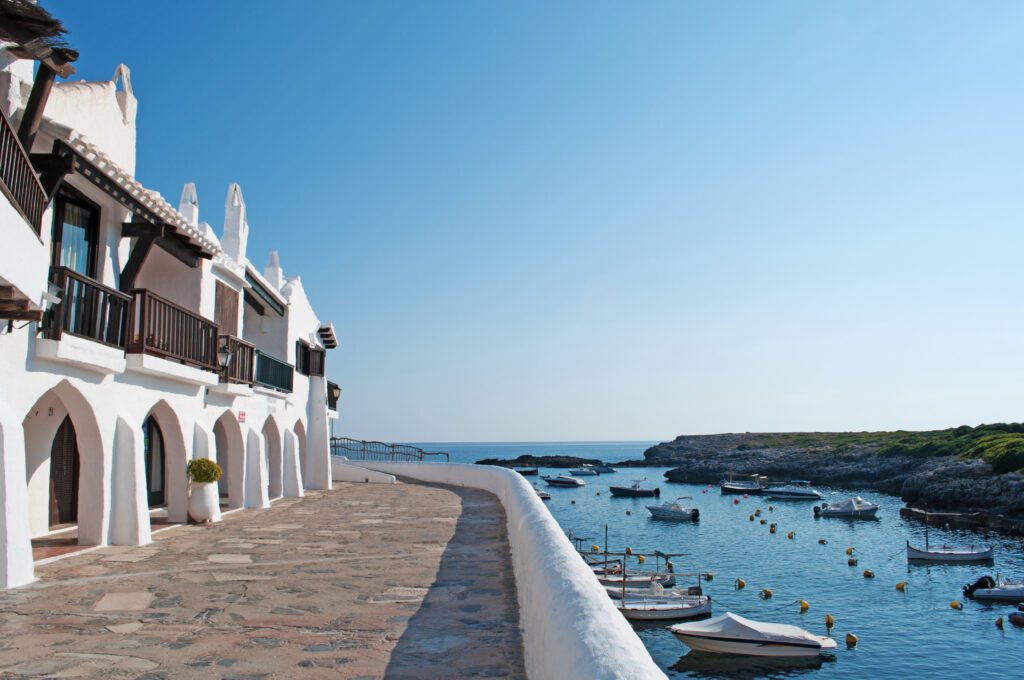
Binibeca is a charming fishing village on Menorca's southeast coast. Known for its white houses and narrow streets, it offers a peaceful atmosphere. It's the perfect place to stroll and take photos, especially in the old part, Binibeca Vell. Binibeca beach, with its soft sand and clear waters, is ideal for swimming and relaxing in the sun. The village has a number of restaurants and bars where you can sample the local specialties. Binibeca is also a good starting point for exploring Menorca's other beaches and coves. Easily accessible by car, there's parking close to the beach. Tip: visit early in the morning or late in the afternoon to avoid the crowds. See also our tips for getting around Men orca!
15- Cala Turqueta
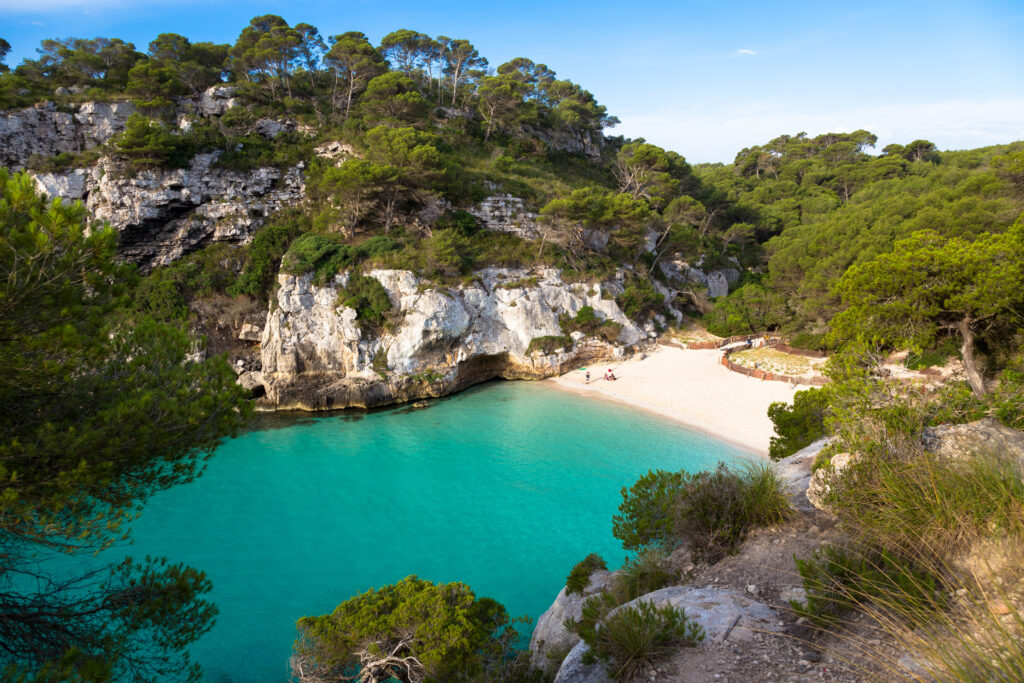
This is anarchipelago made up of several small islands, offering a unique marine and terrestrial ecosystem. To get there, take a boat from the port of Colònia de Sant Jordi or Porto Petro. Once on the main island, Cabrera, explore the castle, museum and lighthouse to learn more about its history. The crystal-clear waters are ideal for diving and snorkeling, with a rich and diverse marine fauna. Remember to bring your own food and water, as there are few services on site. Hiking is also popular, with trails offering spectacular views. Tip: book your excursion in advance, especially in high season, as access is restricted to protect the environment.
How do I get around the Balearic Islands?
To travel between the Balearic Islands, ferries are the most common and convenient option. They link Mallorca, Menorca, Ibiza and Formentera, allowing both passengers and vehicles to be transported. Inter-island flights are a faster alternative, although generally more expensive. They are particularly suitable for connections between the larger islands of Mallorca, Menorca and Ibiza. Private boat hire is also available, offering flexibility and access to less accessible areas. Finally, organized excursions are a good option for those who prefer guided tours or predefined itineraries.
When is the best time to visit the Balearic Islands?
- High season (June to August): These summer months are ideal for those looking to enjoy the sun and lively nightlife, especially on Ibiza. However, this is also the most touristy period, so expect bigger crowds and higher prices.
- Mid-season (April-May and September-October): These months are perfect if you prefer a milder climate and fewer crowds. The weather is pleasant for swimming and ideal for hiking and visiting historical sites. What's more, prices are generally lower than during the high season.
- Low season (November to March): Although not ideal for swimming or beach activities due to cooler temperatures, it's a good time to explore the islands' culture and history without the tourist crowds. Some hotels, restaurants and attractions may be closed or have reduced opening hours during this period.
What's the most beautiful place on the Balearics?
Formentera is the smallest of the main Balearic islands and is renowned for its breathtaking beaches, with crystal-clear waters and fine sand. Among these beaches, Platja de Ses Illetes is particularly famous for its resemblance to Caribbean beaches. Formentera offers a more tranquil, unspoilt setting than its more popular neighbors Ibiza and Mallorca.


